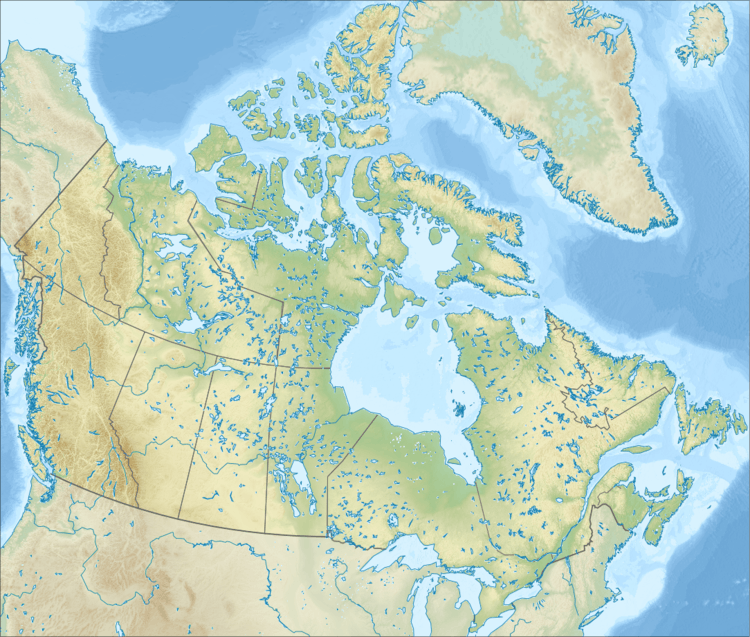Mount Lucania
| Mount Lucania | |
|---|---|
|
Mount Steele (center), with Mount Lucania just left of it and behind it | |
| Highest point | |
| Elevation | 5,240+ m (17,192+ ft) [1] |
| Prominence | 3,040 m (9,970 ft) [1] |
| Isolation | 43 kilometres (27 mi) |
| Listing | |
| Coordinates | 61°01′24″N 140°27′56″W / 61.0233333°N 140.4655556°WCoordinates: 61°01′24″N 140°27′56″W / 61.0233333°N 140.4655556°W [2] |
| Geography | |
 Mount Lucania Location in Canada | |
| Location | Yukon, Canada |
| Parent range | Saint Elias Mountains |
| Topo map | NTS 115F/01 |
| Climbing | |
| First ascent | 1937 by Bradford Washburn and Robert Hicks Bates |
| Easiest route | Glacier, snow and ice climb |
Mount Lucania is the third highest mountain located entirely in Canada. A long ridge connects Mount Lucania with Mount Steele (5,073m), the fifth highest in Canada. Lucania was named by the Duke of Abruzzi, as he stood on the summit of Mount Saint Elias on July 31, 1897, having just completed the first ascent. Seeing Lucania in the far distance, beyond Mount Logan, he immediately named it "after the ship on which the expedition had sailed from Liverpool to New York," the RMS Lucania.[3]
The first ascent of Mount Lucania was made in 1937 by Bradford Washburn and Robert Hicks Bates. They used an airplane to reach Walsh Glacier, 2,670 m (8,760 ft) above sea level; the use of air support for mountaineering was novel at the time. Washburn called upon Bob Reeve, a famous Alaskan bush pilot, who later replied by cable to Washburn, "Anywhere you'll ride, I'll fly". The ski-equipped Fairchild F-51 made several trips to the landing site on the glacier without event in May, but on landing with Washburn and Bates in June, the plane sank into unseasonal slush. Washburn, Bates and Reeve pressed hard for five days to get the airplane out and Reeve was eventually able to get the airplane airborne with all excess weight removed and with the assistance of a smooth icefall with a steep drop. Washburn and Bates continued on foot to make the first ascent of Lucania, and in an epic descent and journey to civilization,[4] they hiked over 150 miles (240 km) through the wilderness to safety in the small town of Burwash Landing in the Yukon.[5]
[6] The second ascent of Lucania was made in 1967 by Jerry Halpern, Mike Humphreys, Gary Lukis, and Gerry Roach.
See also
References
- 1 2 "Mount Lucania". Peakbagger.com. Retrieved 2011-05-09.
- ↑ "Mount Lucania". Geographical Names Data Base. Natural Resources Canada. Retrieved 2011-05-09.
- ↑ Roberts, David (2002). Escape from Lucania. Simon & Schuster. p. 57. ISBN 1-4165-6767-4.
- ↑ Venables, Stephen (2006). Voices from the Mountains. Pleasantville, NY: Reader's Digest. pp. 40–43. ISBN 0-7621-0810-X.
- ↑ Medred, Craig (October 7, 2007). "Climber's exploits earned little recognition". Anchorage Daily News. Archived from the original on 2009-02-11. Retrieved 2011-05-09.
- ↑ Halpern, Jerry (1968). "Second Ascent of Lucania and Third of Steele". American Alpine Clube Journal. 1968: 158. Retrieved 5 November 2016.
Literature
David Roberts, Escape from Lucania: An Epic Story of Survival (2002), Simon & Schuster, ISBN 0-7432-2432-9.